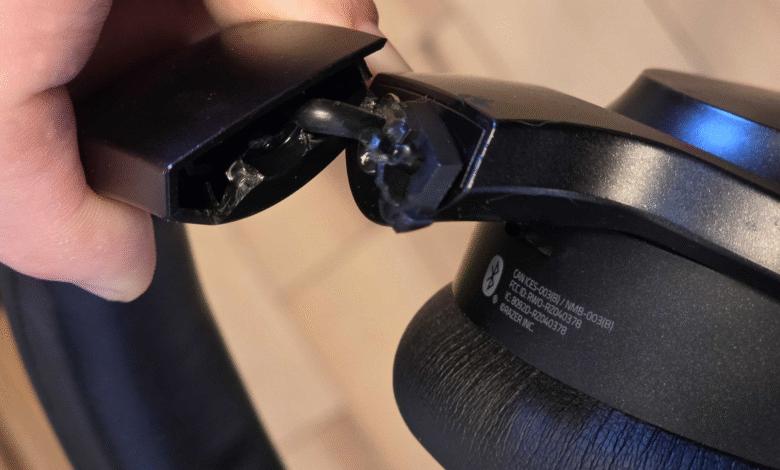How Often to Replace Your Headset, Keyboard & Mouse – Buying Tips for Long-Lasting Gear

▼ Summary
– A Razer Barracuda Pro headset snapped in half during normal use, highlighting that gaming peripherals can fail unexpectedly even when used as intended.
– Gaming headsets typically last 3–4 years for wireless models and 5–6 years for wired ones, with durability depending on build quality and replaceable parts like earpads and headbands.
– For longevity in headsets, prioritize features such as replaceable earpads, sturdy metal construction over plastic, and analog connectivity for reliability.
– Mechanical keyboards can last many years, especially with durable features like double-shot PBT keycaps, hot-swappable switches, and solid aluminum builds.
– Gaming mice generally last 2–4 years and benefit from a sturdy build, drag-free or detachable cables, and onboard memory to avoid software dependency.
Knowing when to replace your computer peripherals can save you both money and frustration, ensuring you always have reliable gear without falling for unnecessary upgrade cycles. My coworker Matt recently arrived at a morning meeting wearing what could only be described as half a headset. He hadn’t been adjusting it or handling it roughly, it simply snapped in two while resting on his head. His Razer Barracuda Pro, despite its rigid carrying case, proved fragile under normal use. Situations like this are common in our workspace, whether it’s a headset, keyboard, mouse, or even furniture giving out unexpectedly.
Gaming peripherals aren’t designed to last forever. They experience physical wear and become outdated as technology advances. While manufacturers often push new models every couple of years, their upgrade cycles shouldn’t dictate your purchasing decisions. So how long should you realistically expect your gear to last?
Headsets
Matt’s headset lasted around two and a half years, which is shorter than average. Wireless headsets typically offer three to four years of solid use before battery degradation becomes noticeable. Wired models, if well-constructed, can easily last five or six years, sometimes longer if they feature user-replaceable components.
When selecting a durable headset, prioritize these features:
Replaceable earpads are essential. These cushions often wear out within one to two years, especially if made of leatherette or used during intense sessions. Models like the Logitech G Pro X 2 Lightspeed and Asus ROG Delta II even include spare earpads in the box.
Replaceable headbands are another plus. While headband padding lasts longer than earpads, it still deteriorates over time. Look for options like the Corsair Void Wireless v2 or Beyerdynamic MMX 300 Pro, which allow for easy replacement.
Analog connectivity remains a reliable fallback. Some wireless headsets omit this feature entirely, but models like the Asus ROG Delta II and Logitech G Pro X 2 Lightspeed still include a wired option.
Build quality matters. Lightweight all-plastic headsets may be comfortable, but they lack durability. Opt for designs with metal headbands like the SteelSeries Arctis Nova Pro or sturdy hinges like those on the HyperX Cloud III S Wireless.
Keyboards
A high-quality mechanical keyboard can serve you well for a decade or more. Many users upgrade every four to five years not due to failure, but simply for newer features or aesthetics.
For a long-lasting keyboard, consider:
Double-shot PBT keycaps resist shine and wear far better than the more common ABS alternatives. Premium boards like the Asus ROG Strix Scope II 96 Wireless and Logitech G915 X TKL use these durable keycaps.
Hot-swappable switches allow you to replace individual components without soldering. Some keyboards, like the Asus ROG Azoth X and Lemokey L3, support a wide range of mechanical switches. The Glorious GMMK 3 series even accommodates both mechanical and magnetic switches.
Aluminum chassis keyboards, such as the Meletrix Boog75 or Keychron Q1 HE, often feature superior overall construction. While keyboards don’t move much, a solid build can better withstand heavy typing or gaming sessions.
Mice
Mice endure more physical stress than any other peripheral. Buttons, sensors, and cabling face constant use, and many gamers replace their mouse every two to three years. With careful use, however, a good gaming mouse can last three to four years.
To maximize your mouse’s lifespan, look for:
A solid, creak-free build right out of the box. Flexing sides, a loose scroll wheel, or mushy switches only worsen over time.
For wired mice, a drag-free paracord cable like the one on the HyperX Pulsefire Haste 2 greatly improves the experience. Alternatively, consider a mouse with a detachable cable, such as those in the SteelSeries Aerox series.
Onboard memory is crucial for long-term usability. Mice that store settings internally remain functional even if配套 software becomes outdated or unsupported. Avoid models that rely entirely on cloud-based configurations.
Avoid overpaying for exotic materials. A carbon fiber shell, like on the Asus ROG Harpe Ace Extreme, won’t prevent common aging issues like switch failure or sensor obsolescence. Invest in proven durability rather than flashy materials.
By focusing on build quality, repairability, and sensible features, you can extend the life of your peripherals and make smarter purchasing decisions.
(Source: Tom’s Hardware)